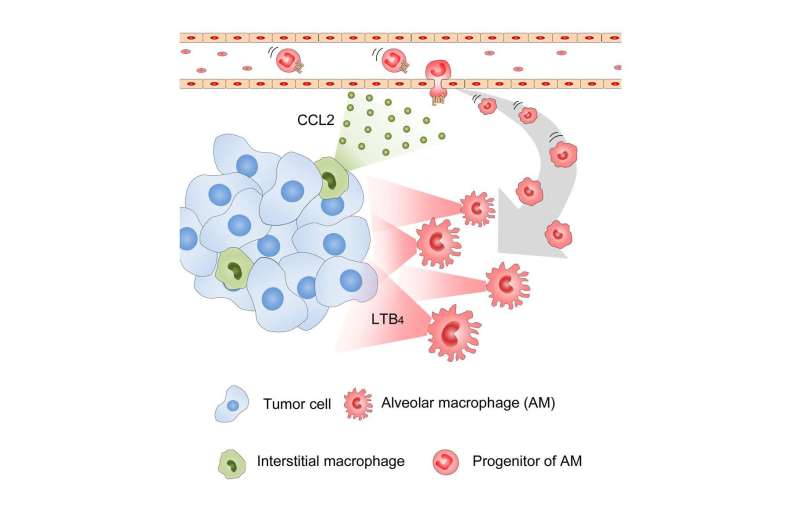When push comes to shove: Airway cells propel liver cancer spread to lungs

Hepatocellular carcinoma (HCC) is the most common form of liver cancer, and the third biggest cause of death from cancer worldwide. Although HCC patients have benefited from recent improvements in diagnoses and various therapies, their average survival time is still only 16.2 months, falling to just under 6 months in those whose cancer has spread to their lungs.
Lung metastasis occurs when tumor cells from the liver enter the bloodstream. This process involves a range of tumor-host cell interactions, but the exact details were not known. Now, a Japanese team of researchers led by Kanazawa University has undertaken a detailed investigation of the role of two scavenger white blood cell types (macrophages) of the lung, and a myriad of molecules associated with inflammation in a mouse model of metastasis. The study was reported in the Journal of Immunology.
The animal model was produced by injecting a mouse HCC cell line into the veins of mice, which resulted in the growth of small metastatic lung nodules that resembled HCC lung metastasis in humans. By monitoring the metastasis, the team detected an accumulation of two types of macrophages in the lungs: interstitial macrophages (IMs) and alveolar macrophages (AMs).
"IMs derive from the circulation, and were already known to aid the survival and growth of lung tumors," says study first author Takuto Nosaka. "Conversely, AMs come from tissue lining the inside of air sacs (alveoli) in the lungs, and were only recently shown to be involved in metastasis. Their function in lung metastasis was unclear, but their observed increase in this model is the first evidence that they must play an important role."
Indeed, AMs around the mouse lung nodules produced more of the inflammatory lipid leukotriene B4 (LTB4) than IMs. LTB4 activates immune cells, and directly boosts the proliferation and invasiveness of both human and mouse cancer cells, including HCC cells. AMs were also shown to promote tumor cell growth at metastatic lung nodules through LTB4 secretion.
"We next focused on AM recruitment from the bloodstream into the lungs, and showed that this was controlled by IMs which express the signaling molecule CCL2," says corresponding author Naofumi Mukaida. "The CCL2 receptor, CCR2, is expressed by AMs, and binding of the two molecules controls AM accumulation."
This AM-IM interaction contributes to the progression of lung metastasis through the production of LTB4, suggesting the potential for developing a novel treatment approach that targets these molecules.
More information: Takuto Nosaka et al. Alveolar Macrophages Drive Hepatocellular Carcinoma Lung Metastasis by Generating Leukotriene B4, The Journal of Immunology (2018). DOI: 10.4049/jimmunol.1700544


















